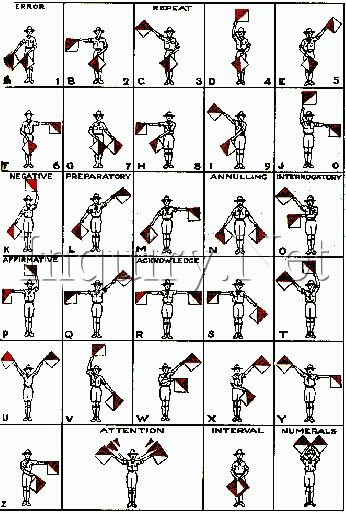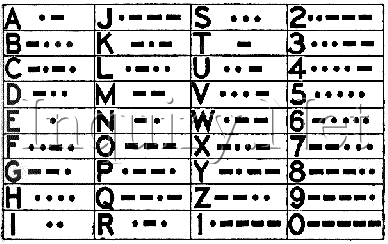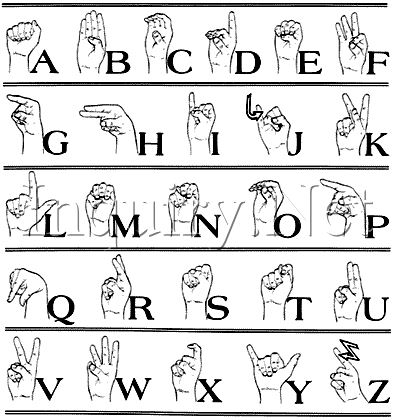Signaling is well worth knowing. It is good fun to be able to signal your friend across the street without other people understanding what you are talking about. Before the development of telephones or radios, signal codes allowed many people to communicate over long distances.
Telegraph operators used Morse Code to send messages around the world. Sailors used both Morse and Semaphore to pass messages between ships. It is still makes an exciting hobby for licensed amateur radio operators. While there are few practical applications for these signaling methods in today's world, they are useful to know in case of an emergency.
Semaphore

Semaphore signaling is used mainly for short distance communications. Some points to remember:
| Signaling is useful only when it can be read. The letters must be made perfectly and must be clearly seen. | |
| The sender must exactly face the person they are signaling. They must stand firmly, with the feet apart. | |
| The flags must be at arms reach, arm and flag making a straight line. | |
| The arms must be in the exact position for each letter. | |
| When making T, O, and W the flags must not cover one another. | |
| When making double letters bring the flags in to the body after the first letter. | |
| Do not send too quickly. Never send faster than the other person can read. |
Morse Code

In the Morse Code letters are formed by a series of dots and dashes by using a Morse Key attached to a buzzer. Because of its adaptability, Morse Code is more useful than Semaphore, but it requires much practice to become proficient.
Morse Code signals and their meaning:
VE VE VE Calling up signal
K Carry On. (Answer to VE, if ready to receive message)
Q Wait. (Answer to VE if not ready to receive message.)
T General answer
AAA Period or decimal
AR End of message
R Message received correctly
8 dots Erase.
GB Good Bye. (used when closing down)
Manual Alphabet for the Deaf

The Manual Alphabet for the Deaf is used to spell out names and places for which there are no signs. Most words are not spelled out, however, but are communicated with a sign that represents the whole word or idea.
Sign Languages such as American Sign Language (ASL) and Indian Sign Language have many advantages. In his chapter on Sign Language in the Birch Bark Roll, Ernest Seton lists some of these:
|